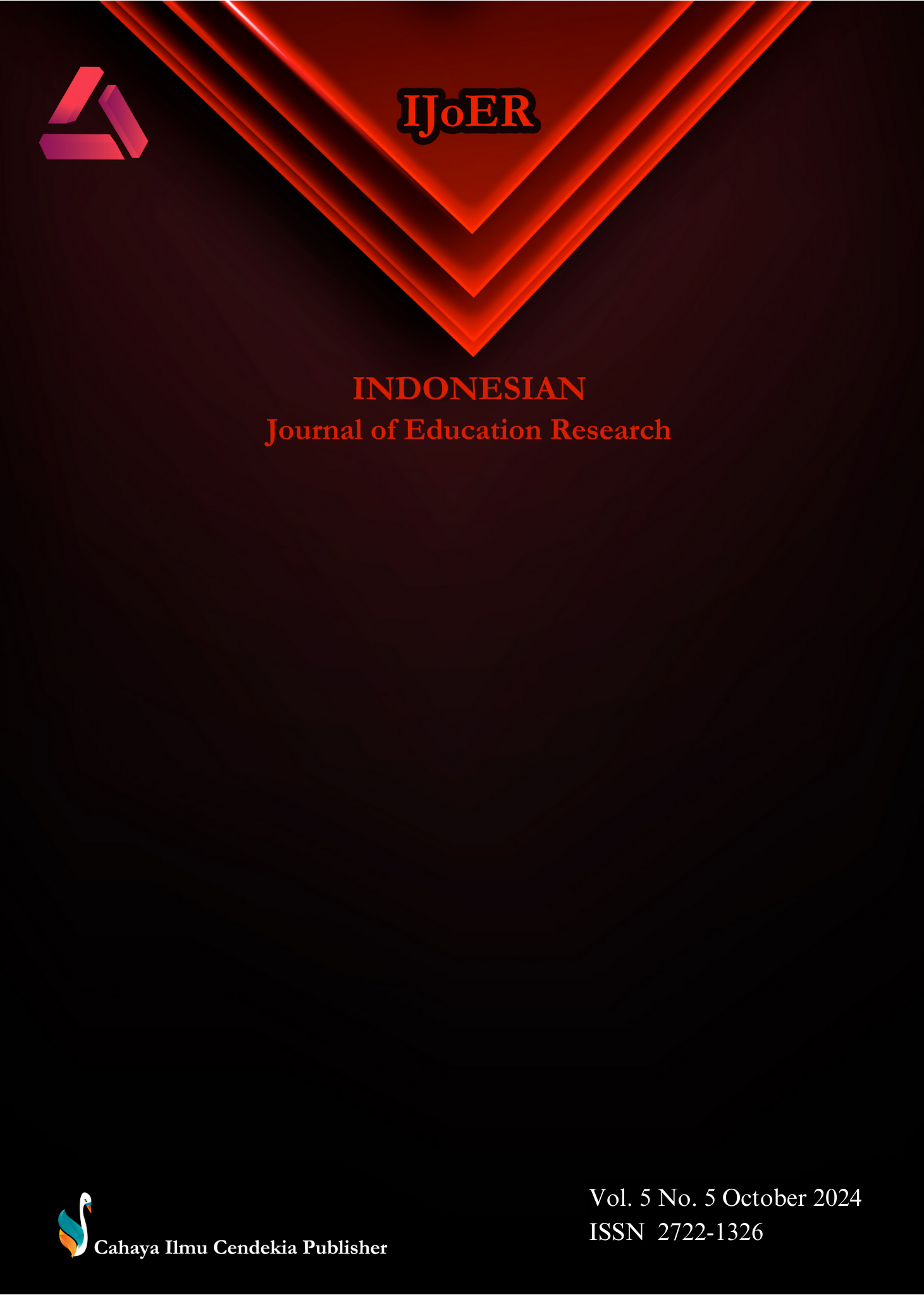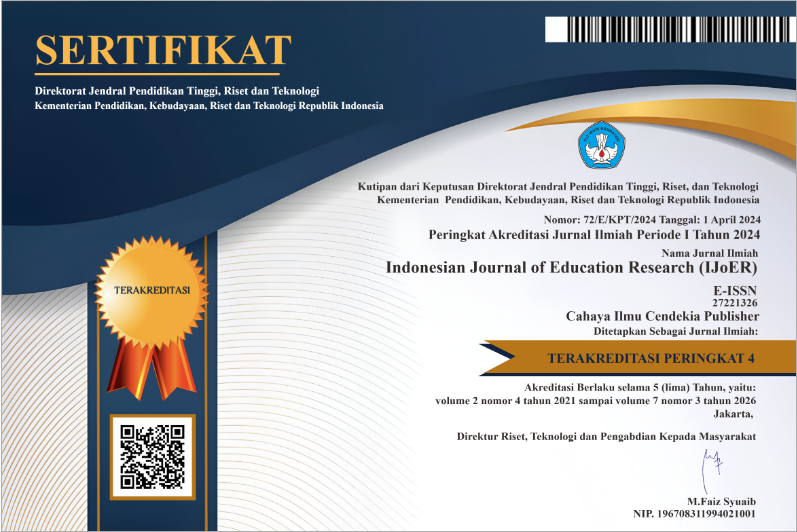The Elementary School Teachers’ Motivational Types and Their Individual Performance Commitment
Abstract
Purpose of the study: This research was conducted to investigate the motivational types of elementary school teachers and their relationship with their individual performance commitment and review scores and their identified demographic profiles.
Methodology: Employing a quantitative-correlation research design, a survey was administered to 78 elementary school teachers in Kidapawan City, Philippines. The gathered data underwent rigorous analysis using descriptive and correlational statistics with the Statistical Package for the Social Sciences (SPSS).
Main Findings: The results of this study revealed that the respondents exhibited a strong intrinsic motivation, demonstrating unwavering dedication to the teaching profession. Simultaneously, their extrinsic motivations underscored the importance of external incentives and recognition in enhancing their commitment to teaching. This research also showcased the exemplary performance of the respondents in fulfilling their mandated responsibilities, as evident in their IPCR ratings. Further analysis unveiled no significant relationship between the respondents' IPCR scores and their motivational types, whether intrinsic or extrinsic.
Novelty/Originality of this study: In general, the outcomes of this research contribute invaluable information for formulating conclusions and practical recommendations. The findings offer insights into the interplay of motivation and performance, which can be applied to enhance teacher support, professional development, and the overall effectiveness of the teaching profession.
References
A. Appova and F. Arbaugh, “Teachers’ motivation to learn: Implications for supporting professional growth,” Professional development in education, vol. 44, no. 1, pp. 5–21, 2018, doi: 10.1080/19415257.2017.1280524.
G. Engin, “An Examination of Primary School Students’ Academic Achievements and Motivation In Terms of Parents’ Attitudes, Teacher Motivation, Teacher Self-efficacy, and Leadership Approach.,” International journal of progressive education, vol. 16, no. 1, pp. 257–276, 2020, doi: 10.29329/ijpe.2020.228.18.
L. Sharma and M. Srivastava, “Teachers’ motivation to adopt technology in higher education,” Journal of Applied Research in Higher Education, vol. 12, no. 4, pp. 673–692, 2020, doi: 10.1108/JARHE-07-2018-0156.
D. Kartini, M. Kristiawan, H. Fitria, S. Negeri, and M. Sugihan, “The influence of principal’s leadership, academic supervision, and professional competence toward teachers’ performance,” International Journal of Progressive Sciences and Technologies (IJPSAT), vol. 20, no. 1, pp. 156–164, 2020.
D. J. C. Asio and R. L. Tagare Jr, “the Early Teaching Experiences of Newly Hired Physical Education Teachers: Implications for Curriculum Enhancement,” The Physical Educator, vol. 81, pp. 231–251, 2024.
D. E. Kusumaningrum, R. B. Sumarsono, and I. Gunawan, “Professional ethics and teacher teaching performance: Measurement of teacher empowerment with a soft system methodology approach,” International Journal of Innovation, Creativity and Change, vol. 5, no. 4, pp. 611–624, 2019.
A. J. B. Nioda and R. L. Tagare Jr, “The Experiences of Non-Physical Education Generalist Teachers in Implementing PE in the Primary Grades: Implications for Capability Development Initiatives,” International Electronic Journal of Elementary Education, vol. 16, no. 3, pp. 325–335, 2024, doi: 10.26822/iejee.2024.334.
A. Lutfah, N. Hariyati, and W. Handayaningrum, “Improved teacher performance through work culture and environment,” International Journal for Educational and Vocational Studies, vol. 1, no. 8, pp. 859–863, 2019, doi: 10.29103/ijevs.v1i8.2240.
M. C. Whitaker and K. M. Valtierra, “Enhancing preservice teachers’ motivation to teach diverse learners,” Teach Teach Educ, vol. 73, pp. 171–182, 2018, doi: 10.1016/j.tate.2018.04.004.
D. J. Osman and J. R. Warner, “Measuring teacher motivation: The missing link between professional development and practice,” Teach Teach Educ, vol. 92, p. 103064, 2020, doi: 10.1016/j.tate.2020.103064.
E. C. Jimenez, “Motivating Factors of Teachers in Developing Supplementary Learning Materials (SLMs).,” Online Submission, vol. 8, no. 5, pp. 108–113, 2020, doi: 10.21474/IJAR01/10912.
M. L. C. Batugal and D. J. C. Tindowen, “Influence of organizational culture on teachers’ organizational commitment and job satisfaction: The case of catholic higher education institutions in the Philippines,” Universal Journal of Educational Research, vol. 7, no. 11, pp. 2432–2443, 2019, doi: 10.13189/ujer.2019.071121.
A. Phakiti, “Quantitative research and analysis,” Research methods in applied linguistics: A practical resource, pp. 27–48, 2015.
E. Seeram, “An overview of correlational research,” Radiol Technol, vol. 91, no. 2, pp. 176–179, 2019.
F. Shaikh, M. I. Saad, and M. I. Bhutto, “Level of Primary School Teachers’Extrinsic and Intrinsic Motivation and Performance in Sindh,” PJE, vol. 29, no. 1–2, 2012, doi: 10.30971/pje.v29i1-2.108.
L. S. Keiler, “Teachers’ roles and identities in student-centered classrooms,” Int J STEM Educ, vol. 5, pp. 1–20, 2018, doi: 10.1186/s40594-018-0131-6.
J.-M. Dewaele and C. Li, “Teacher enthusiasm and students’ social-behavioral learning engagement: The mediating role of student enjoyment and boredom in Chinese EFL classes,” Language Teaching Research, vol. 25, no. 6, pp. 922–945, 2021, doi: 10.1177/13621688211014538.
W. Liu, X.-W. Li, and Y. Zou, “The formation of teachers’ intrinsic motivation in professional development,” Integr Psychol Behav Sci, vol. 53, pp. 418–430, 2019, doi: 10.1007/s12124-018-9465-3.
A. Klaeijsen, M. Vermeulen, and R. Martens, “Teachers’ innovative behaviour: The importance of basic psychological need satisfaction, intrinsic motivation, and occupational self-efficacy,” Scandinavian Journal of Educational Research, vol. 62, no. 5, pp. 769–782, 2018, doi: 10.1080/00313831.2017.1306803.
S. Y. F. Tang, A. K. Y. Wong, D. D. Y. Li, and M. M. H. Cheng, “Millennial generation preservice teachers’ intrinsic motivation to become a teacher, professional learning and professional competence,” Teach Teach Educ, vol. 96, p. 103180, 2020, doi: 10.1016/j.tate.2020.103180.
M. B. Ginsberg and R. J. Wlodkowski, “Intrinsic motivation as the foundation for culturally responsive social-emotional and academic learning in teacher education,” Teacher Education Quarterly, vol. 46, no. 4, pp. 53–66, 2019.
L. Suryani and W. Widhiyanto, “Students’ Motivation in Learning English in Indonesia: A Critical Review,” IDEAS: Journal on English Language Teaching and Learning, Linguistics and Literature, vol. 11, no. 2, pp. 1611–1619, 2023.
R. M. Ryan and E. L. Deci, “Intrinsic and extrinsic motivation from a self-determination theory perspective: Definitions, theory, practices, and future directions,” Contemp Educ Psychol, vol. 61, p. 101860, 2020, doi: 10.1016/j.cedpsych.2020.101860.
J. Buchner and J. Zumbach, “Promoting Intrinsic Motivation with a Mobile Augmented Reality Learning Environment.,” International Association for Development of the Information Society, 2018.
Z. Yasmeen, I. Mushtaq, and M. Murad, “Intrinsic and extrinsic motivation of teachers in special education secondary school: A qualitative study,” Journal of Educational Research, vol. 22, no. 2, pp. 15–30, 2019.
H.-R. Jang, “Teachers’ intrinsic vs. extrinsic instructional goals predict their classroom motivating styles,” Learn Instr, vol. 60, pp. 286–300, 2019, doi: 10.1016/j.learninstruc.2017.11.001.
C. Picazo, N. Gamero, A. Zornoza, and J. M. Peiró, “Testing relations between group cohesion and satisfaction in project teams: A cross-level and cross-lagged approach,” European Journal of Work and Organizational Psychology, vol. 24, no. 2, pp. 297–307, 2015, doi: 10.1080/1359432X.2014.894979.
D. Salvador, R. K. Sales, G. K. Reyes, J. Lechuga, J. A. L. Llevado, and T. Ting, “An action research to improve social health insurance coverage of Philippines’ informal sector,” Eur J Public Health, vol. 30, no. Supplement_5, pp. ckaa166-1373, 2020, doi: 10.1093/eurpub/ckaa166.1373.
C. F. Ng and P. K. Ng, “A review of intrinsic and extrinsic motivations of ESL learners,” International Journal of Languages, Literature and Linguistics, vol. 1, no. 2, pp. 98–105, 2015, doi: 10.7763/IJLLL.2015.V1.20.
G. G. Bear, J. C. Slaughter, L. S. Mantz, and E. Farley-Ripple, “Rewards, praise, and punitive consequences: Relations with intrinsic and extrinsic motivation,” Teach Teach Educ, vol. 65, pp. 10–20, 2017, doi: 10.1016/j.tate.2017.03.001.
L. Judilla and J. Rellon, “Teacher Resilience and Professional Development Trainings as Predictors of Teaching Capacity in Public Schools: A Convergent Approach,” Southeast Asian Journal of Multidisciplinary Studies, vol. 2, no. 1, 2022.
M. R. Subosa, “Conceptualising teacher resilience: A comparative systematic multidisciplinary review of teacher resilience literature,” 2021.
Copyright (c) 2024 Gauvin Adlaon, Kautin S Kulano, Erlmarie P Crase, Norquez M Mangindra, Ezra Ivan Rey A Abalos

This work is licensed under a Creative Commons Attribution 4.0 International License.
Authors who publish with this journal agree to the following terms:
- Authors retain copyright and acknowledge that the Indonesian Journal of Education Research (IJoER) is the first publisher licensed under a Creative Commons Attribution 4.0 International License.
- Authors are able to enter into separate, additional contractual arrangements for the non-exclusive distribution of the journal's published version of the work (e.g., post it to an institutional repository or publish it in a book), with an acknowledgment of its initial publication in this journal.
- Authors are permitted and encouraged to post their work online (e.g., in institutional repositories or on their website) prior to and during the submission process, as it can lead to productive exchanges and earlier and greater citation of published work.







.png)
.png)




















